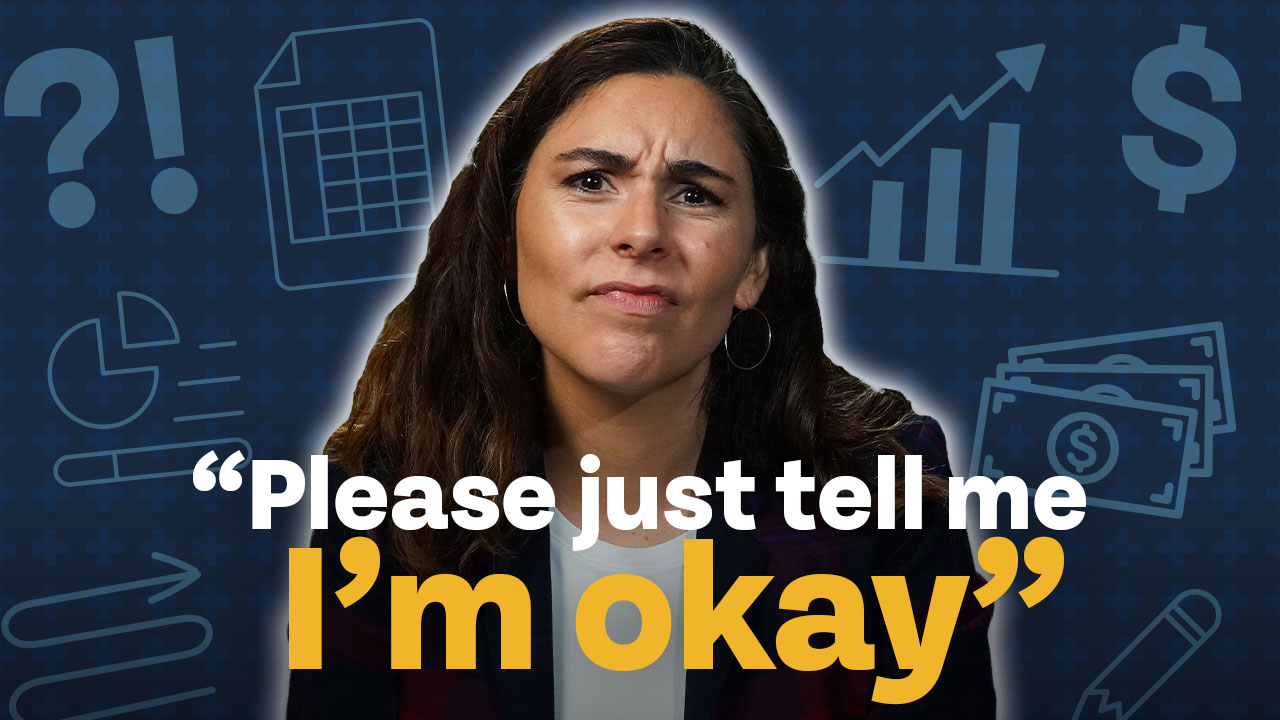Moving on to Michael’s question, he says, “Good morning. I’m getting married in a month, so congrats of all conations.” He says, “We’re debating about what insurance plan to go for with him and the partner. They’re both 25, healthy, no recurring medical bills. So, all that to say, are there any, you know, realities or things that they should know that would make an HSA not the best? ‘Cause we know how much you guys love HSAs. So, what should he be thinking about?”
“Yeah, so we love health savings accounts. In order to be able to do a health savings account, you have to be participating in a high deductible health plan. Well, high deductible, as it sounds, has lower premium payments, but your responsibility for medical costs is going to be greater throughout the year. So, when you go see the doctor, when you have procedures, you are likely going to have a higher deductible and you’re going to have to participate more in the cost of that. So, if you’re in one of those plans, a great benefit is you can fund a health savings account and you can invest those dollars, and you can allow those dollars to grow, and then you can reimburse that money back to yourself tax-free at some point in the future. So, it’s an amazing, wonderful planning opportunity. And for a lot of folks, if you’re young and you’re healthy and you don’t go to the doctor a ton, you don’t get sick a ton, and you’re not on prescription meds, high deductible plans are fine ’cause all you’re really paying for is the premium that you have every month or every pay period, and you don’t really go see the doctor, so you’re not really utilizing the insurance. But that’s not Michael’s question.”
“Michael’s question is not like how does it all work, it’s, is there a scenario, even for a young person, even for a healthy person, where I get to open enroll and I’ve given some options, and maybe I should not choose the high deductible option? When would that occur? I mean, we see this when you get open enrollment, you should try to do your best version of what the future looks like. And if you all think you are going to have a baby in the next year, probably not the year you want to have a high deductible health plan because babies are not cheap. I mean, it’s, um, so if you have options between a loaded up, you know, where you just do a co, you know, essentially a co-pay, and then they cover the rest of the expenses of the birth of your child, then that’s the much better choice, more than likely that that first year, you know, whatever year that you’re going to have that. But if you have a year where you look and you’re like, ‘What, what? We’re going to enjoy marriage for, like, me and my wife, and I were married for 5 years before we had our first child, so we would have probably done very well with a high deductible health plan, loading it up every year, um, to the maximum and then investing, doing the part that, you know, a very small percentage of people actually turn it into a triple tax advantage benefit. You know, where you not only take the current year tax deduction, but you actually invest the money, um, and let it grow for the future and then you get reimbursement tax-free when you show that it was for qualified medical expenses when you pull it out. That is the ideal way to do it, but you’ve got to make sure it fits into your life.”
“So, you’re probably now, Michael, we’ll switch into how do you actually analyze it. First, go look at the deductible amount because, you know, that you’ve got to have that covered. And there might be, for the first year you do it, you might have to use it like a clearing account. So, you wouldn’t actually invest it, you just take the deduction. But hopefully, if you had gotten to year two without any medical expenses that were too out of the norm, you could get beyond what the deductible amount is, so you could start investing. But there’s one other thing you ought to go look at, is that co-insurance rate because we know there’s a difference between deductible and then out-of-pocket maximum. The out-of-pocket maximum, we got to go figure that out. What that is, that’s the most that you could actually spend out of pocket in a year before your insurance company will pay every 100% of everything above and beyond this for all the in-network stuff. So, go look at, I really gave three numbers. I gave deductible, co-insurance, and then out-of-pocket maximum. And then you need to coordinate those things and chart your path forward.”
“Yeah, and one thing that I would encourage you to do is every open enrollment, rework through the exercise. This is how much this plan costs, this is how much this plan costs, this is the deductible, this is the deductible, this is co, this is co, this is tax benefit, this is tax benefit. And then this is employer incentive, and this is employer incentive. And you line up those five or six different metrics, and every year you make the assessment on which one makes the most sense. Just because you opted into one last year does not mean that that’s going to be the one that makes the most sense this year. Oh, and by the way, insurance gets more expensive for employer-sponsored plans. So just because this was the most advantageous one last year, if rates go up and all the numbers change, all the metrics change, change it might substantiate choosing one of the different plans. So you don’t want to be lazy with it. You want to be an advocate for yourself.”
“Well, to your point, I mean, ’cause we’ve seen like insurance, like last year for some clients, we saw went up 16 to 18%. So the way they dealt with it was the co-insurance went from 80% down to 50% on the health plan. That’s going to have an impact on your decision-making. So you might be thinking the same assumption applies every year that when you did this full analysis, you just need to think about only your life goals. No, you might need to go do the full mathematical exercise because the variables within your health insurance could change as well. That’s right.” For more information, check out our free resources.













